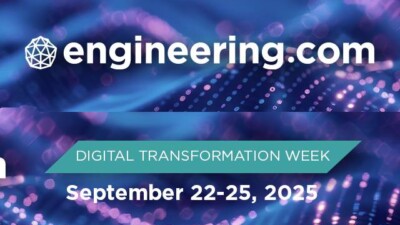Some significant project deliverables that are essential to every digital transformation project plan.
Digital transformation often changes the way organizations create value. Technology adoption and the growing reliance on digital systems significantly benefit engineers.
From predictive analytics, robotic process automation and artificial intelligence to software that enhances collaboration, organizations are leveraging digital technology to create, capture, and deliver value in new and innovative ways.
Well-defined digital transformation project deliverables lead to project success. Vaguely defined or missing project deliverables create a risk of missed expectations, delays and cost overruns.
Here are the significant project deliverables essential to every digital transformation project plan:
- Project charter
- Data analytics and visualization strategy
- Generative AI strategy
- Data conversion strategy
- Data profiling strategy
- Data integration strategy
- Data conversion testing strategy
- Data quality strategy
- Risk Assessment
- Change management plan
- Data conversion reports
These deliverables merit more attention for digital transformation projects than routine systems projects. We’ll examine the deliverables six to eleven in this article. To read the first article, click here.
Data integration strategy
Organizations achieve most of the value of digital transformation from new data-based insights and previously impossible process efficiencies. The insights are revealed through sophisticated data analytics and visualization, which rely on data integration. The process efficiencies are achieved in the same way.
The data integration strategy deliverable describes how data from every data source will be integrated with data from other data sources. The primary integration strategies are:
- Populate a lakehouse or a data warehouse with data from multiple data sources. This strategy persists all the integrated data. Implementation and operation are more expensive but deliver the most integration opportunities and the best query performance.
- Keep data sources where they are and populate cross-reference tables for key values. This strategy persists only key values to create the illusion of integration. It’s appealing because it’s the easiest and cheapest to implement and operate. It sacrifices query performance.
The value of the data integration strategy lies in informing the software development effort for each of the likely tools, such as extract, transform, and load (ETL), data pipelines, and custom software.
Data conversion testing strategy
It’s impossible for engineers to overestimate the effort required for data conversion testing. Every digital transformation project will involve some risk of data degradation as a result of the conversion process.
The data conversion testing strategy is a deliverable that describes who and how the project will test the data conversion and considers the following:
- Automation opportunities.
- Statistical analysis techniques.
- Mismatches in joins of keys and foreign keys.
- Strategies for minimizing manual inspection.
The value of the data conversion testing strategy lies in describing the skills and estimating the effort needed to confirm the adequacy of the data conversion.
Data quality strategy
The current data quality in the data sources will almost always disappoint. That reality leads to a data quality strategy deliverable for digital transformation that describes the following:
- Acceptable data quality level for at least the most critical data elements.
- Data enhancement actions that will augment available data to more fully meet end-user expectations.
- Data quality maintenance processes to maintain data quality for the various data sources.
The data quality strategy enables the organization to achieve a consensus on what constitutes sufficient data quality and which data elements are most critical.
Risk assessment
Digital transformation projects experience various risks. This deliverable reminds management that these projects are not simple or easy.
The specific risks that digital transformation projects experience include:
- Risk of data issues, such as insufficient quality and complex integration. These issues will add cost and schedule to digital transformation projects.
- The risk of viewing AI as a silver bullet. How can engineers reduce AI model hallucinations? explains how to alleviate this risk.
- The risk of data analytics and visualization software complexity. This complexity adds to the cost of training and creates a risk of misleading results.
- The risk of an overly ambitious scope overwhelming the team and budget. This unrealizable scope creates disappointment and reduces commitment to the project.
Identifying and assessing potential risks associated with the transformation will help the project team mitigate risks and minimize their impact if they become a reality. This article How engineers can mitigate AI risks in digital transformation discusses the most common ones.
Change management plan
Digital transformation projects almost always introduce significant changes to business processes. Successful projects define a comprehensive people change management plan that includes:
- Stating the change management goal, approach and supporting objectives.
- Engaging project sponsors and stakeholders.
- Description of the current situation.
- Description of change management strategies, such as training, change agents and end-user support.
- Recommended change management roles and resources.
- Description of the approximate timeline.
This deliverable, when conducted as planned, ensures end-users, such as engineers, adopt new processes and digital tools. Without that adoption, the organization will not realize the benefits of the contemplated project.
Data conversion reports
The data conversion test report contains the results of the data conversion design and testing work for each datastore. It includes:
- The number of software modules developed to perform data conversion.
- A summary of the number of rows that couldn’t be converted with a cause.
- A summary of the data quality improvements required.
The final data conversion report contains the results of the data conversion work by datastore. It includes a summary of the:
- Number of rows converted.
- Data quality improvements that were made.
- Data issues that were not addressed.
These deliverables often frustrate stakeholders because engineers invariably recommend more effort to:
- Improve historical data quality.
- Strengthen data quality processes to maintain future data quality.
Paying detailed attention to these digital transformation project deliverables will ensure the success of your project. This list of deliverables is a subset of the overall set of deliverables that all projects typically complete.



